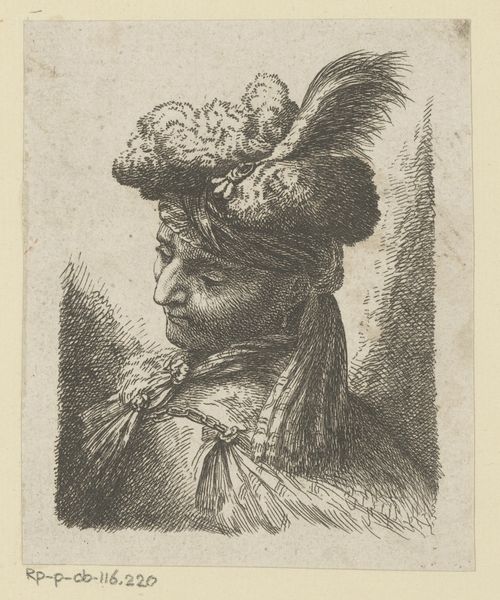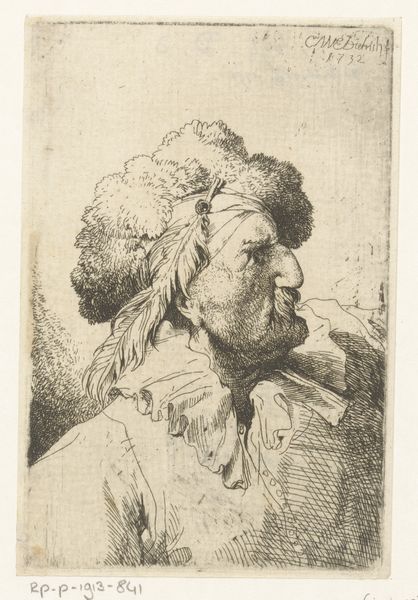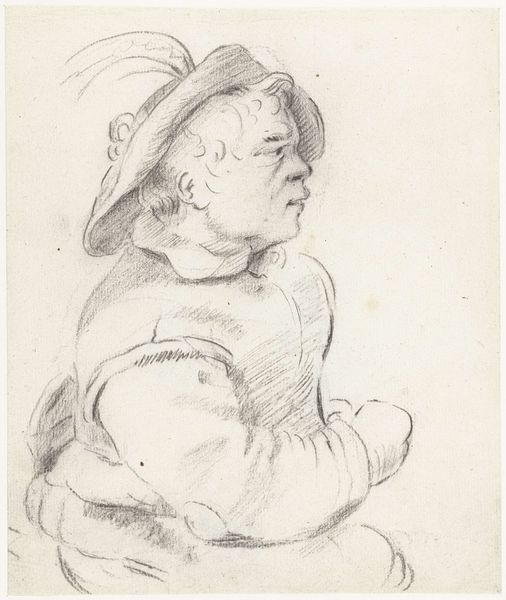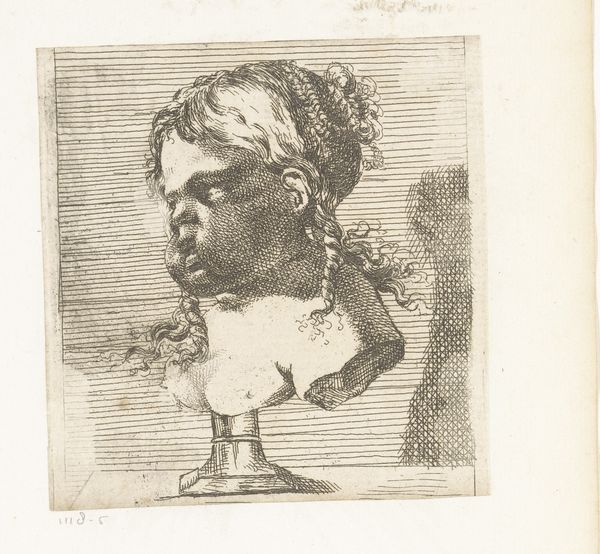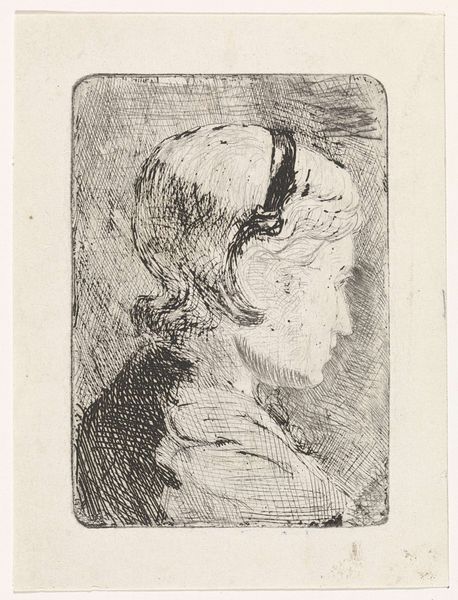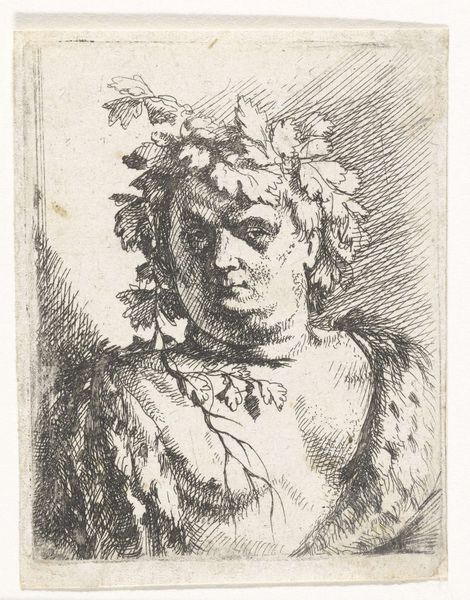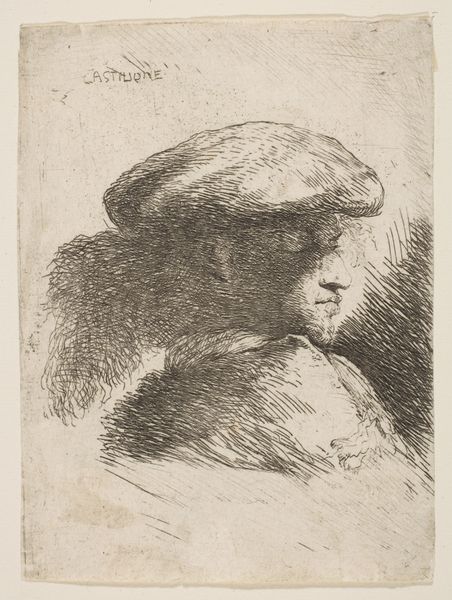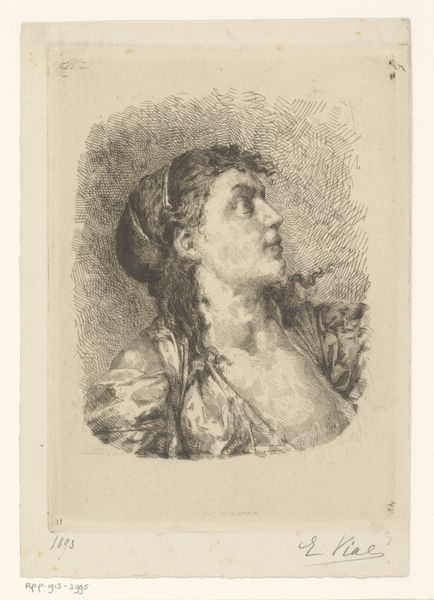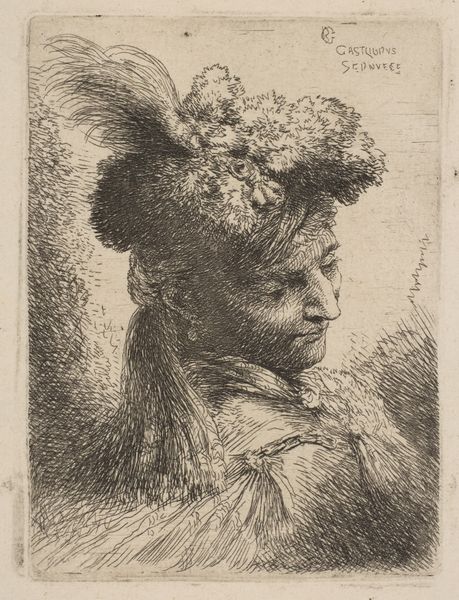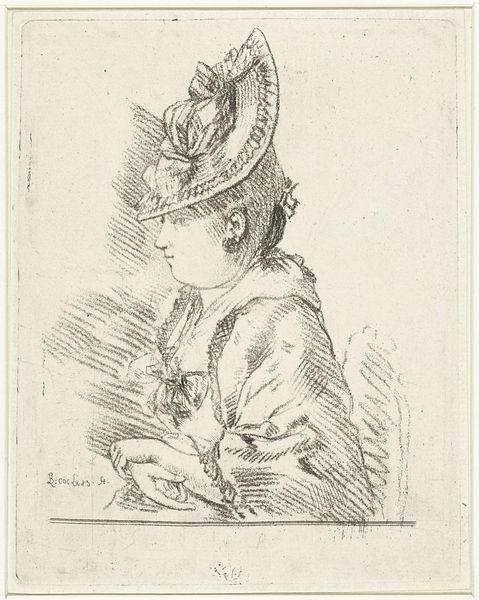
print, etching, engraving
#
portrait
# print
#
etching
#
old engraving style
#
personal sketchbook
#
portrait drawing
#
engraving
#
realism
Dimensions: width 104 mm, height 94 mm
Copyright: Rijks Museum: Open Domain
Curator: Here we have Jacobus Ludovicus Cornet’s etching from 1851, “Jongetje met hoed," or "Young Boy with Hat." It's currently part of the Rijksmuseum collection. Editor: My initial feeling? It's quite somber, despite depicting a child. There's a weightiness to the lines and shading, particularly around the face, that lends it a very serious air. Curator: Yes, the gravity is compelling. Children in art were often symbolic, and the hat here isn’t just a hat. Its slouching form could signify burdens of maturity prematurely placed. A falling cap means loss of status. Or perhaps, this piece speaks more to Cornet’s technical skill in capturing folds and textures with such delicate, repetitive mark-making. Editor: That texture fascinates me. Look at the density of the cross-hatching—the sheer labor involved in creating these intricate lines with an etching needle. It transforms what could be a simple portrait into a testament to the engraver's craft and the hours of work in making this particular print. What about access to materials at that time too? I am curious of its edition, the materials that were involved in this print-making technique at that moment... Curator: The print falls squarely within the Realism movement; a rejection of idealized forms in favor of portraying life as it was. Cornet captured the child as they truly were. Editor: The realism is undeniable, yet there's a starkness that elevates it beyond simple observation. What strikes me too is how accessible this would have made the image at the time. Here is something of artistic, realist appeal, readily reproduced and consumed by a wider public. Curator: Exactly, printmaking democratized art, moving it away from solely the realm of the wealthy and toward the growing middle class. Editor: Cornet's labor and this etching speaks volumes not just about one child, but about the conditions of artistic creation, consumption, and accessibility. Curator: Yes, seeing beyond the subject and into the societal mechanics that both produce and receive this art transforms it in a really remarkable way.
Comments
No comments
Be the first to comment and join the conversation on the ultimate creative platform.
